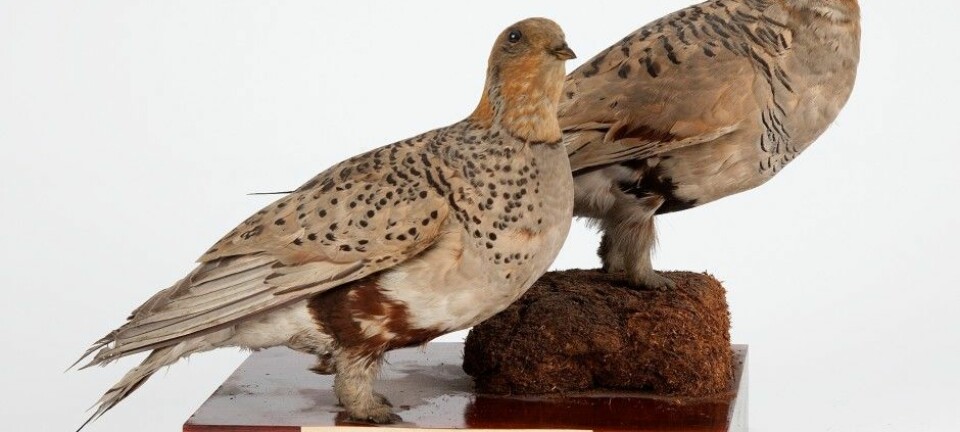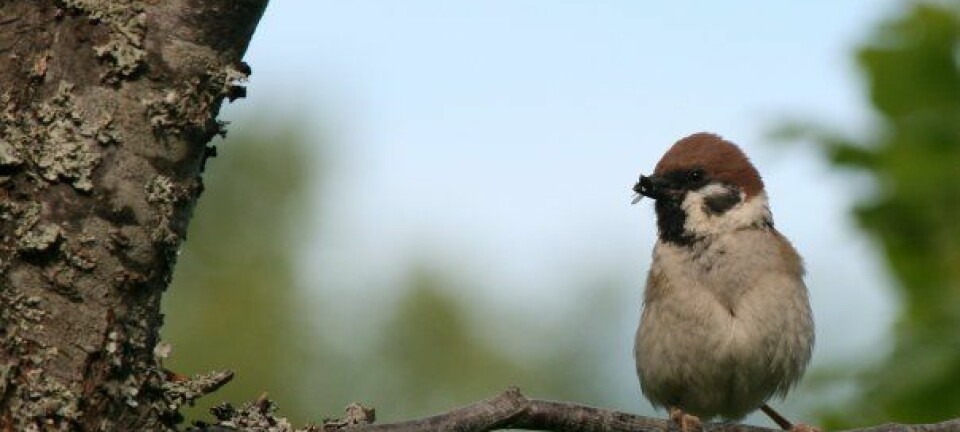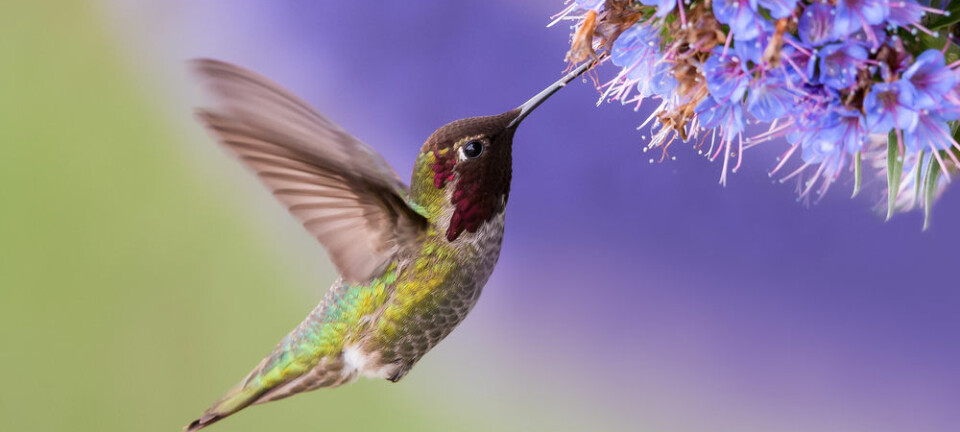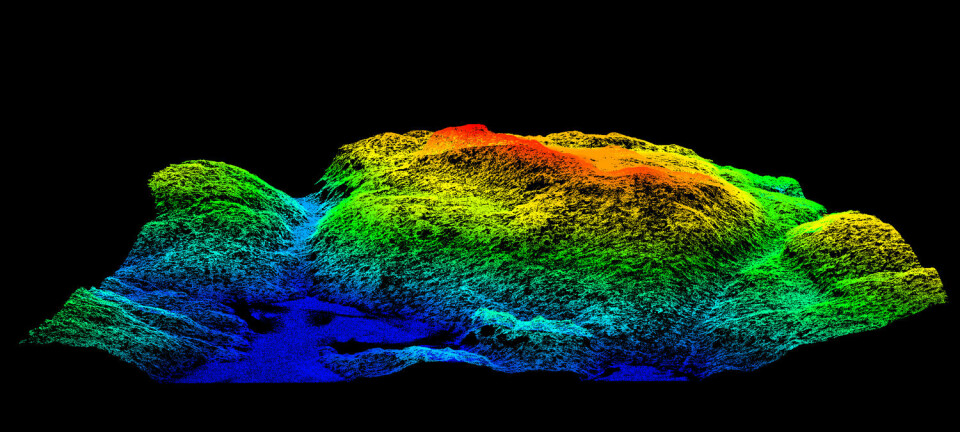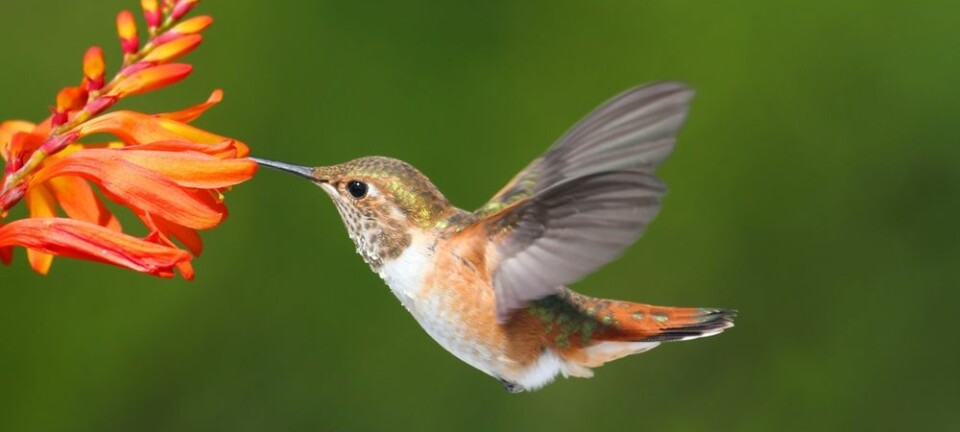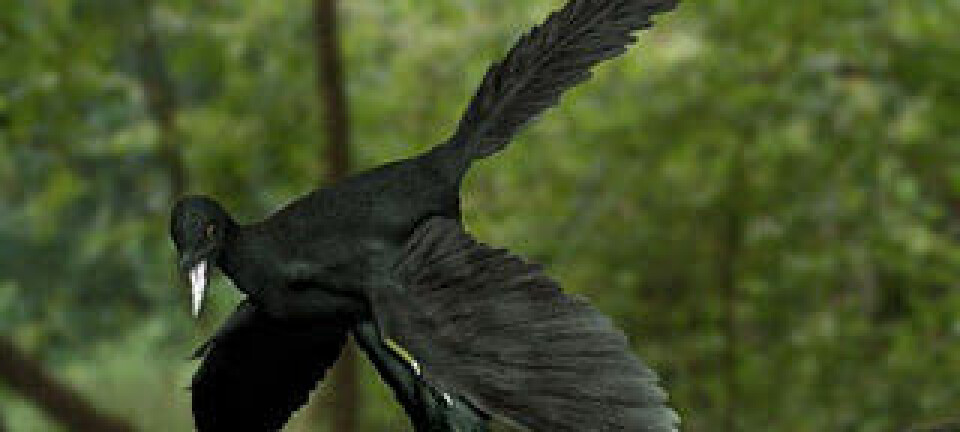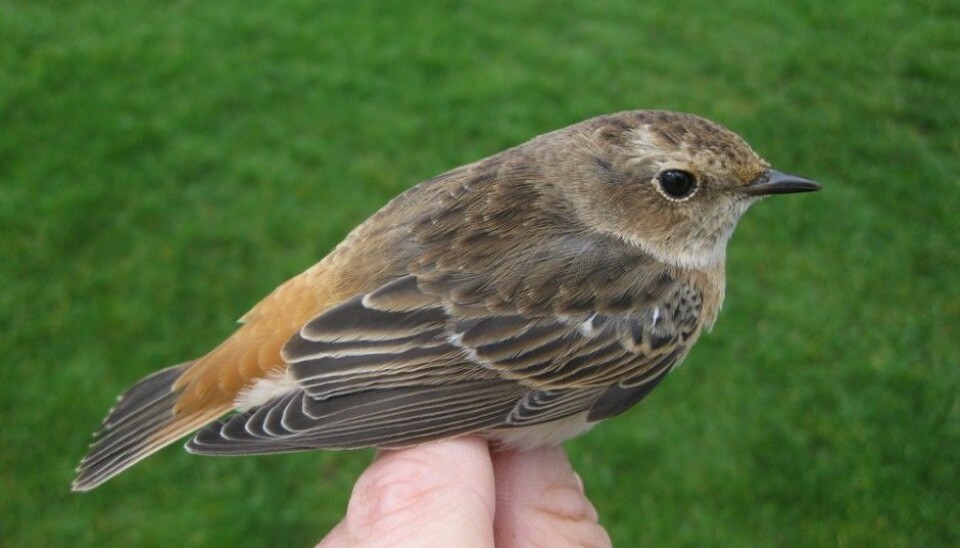
Mysterious bird was unique cross of two unrelated species
In 2013, volunteer bird banders captured a strange looking bird in Lista, on the southern tip of Norway. Now scientists have determined that the bird was a cross between two different genera – a first for this type of bird.
Denne artikkelen er over ti år gammel og kan inneholde utdatert informasjon.
Most people might not have reacted that much if an oddly coloured ball of feathers landed on a twig near them. But bird banders at the Lista Bird Observatory know when something unusual flies into their nets.
And that is exactly what happened on 18 September, 2013.
“We have a standardized bird banding project where we mark migratory birds in the spring and autumn. We have volunteer bird watchers going every hour to catch birds in mist nets to band them,” says Jan Erik Røer from the Norwegian Ornithological Society.
“But suddenly there was this bird in the net that no one had seen before,” he said.
Red, blue, flycatcher, redstart
The little bird looked most like a whinchat (Saxicola rubetra), a bird in the flycatcher family. But the towards the tail, the bird’s rump was an intense orange, which looked more like a bluethroat or a common redstart (Phoenicurus phoenicurus).
This was clearly a hybrid - a mixture of two species. But which species?
The volunteers who took this unusual creature out of the net made sure to carefully pluck a few tail feathers before setting the bird free.
These feathers have now provided the answer as to what the birders actually had in their hands that day in 2013.
Two genera
A genetic analysis of the feathers shows that the bird was a male “rødskvett” (a “redchat”)- the result of a hybrid between a male redstart and a female whinchat.
And there was an even bigger surprise, says Arild Johnsen from the Natural History Museum in Oslo, one of the researchers who analysed the DNA of the feathers from the mysterious bird.
“These birds come from two different genera. Whinchats and redstarts are very different, both genetically and in appearance. Their most recent common ancestor lived 13.3 million years ago,” he says.
“This is the first known case of hybridization between genera in this family,” he said. That makes the little bird fairly special. But Johnsen says the find is perhaps most interesting when viewed in a larger context.
Not just a negative
“This and other recent findings show that hybridization is more common than previously thought,” he said.
Crosses between species can occasionally give rise to new hybrid species, but can also be beneficial by giving a species new genes and characteristics to work with.
“What is perhaps most interesting is that hybridization is not necessarily negative, as has been previously thought, but that it might instead be an important factor in speciation,” he said.
Johnsen thinks that in this case, however, hybridization was probably not a good thing for the Lista bird.
Hybrids are often infertile, which means they cannot have offspring. And issues of fertility aside, it might be quite challenging for the unusual looking bird to find a mate that would accept its strange appearance.
This is all just speculation, though, because no one has seen the little hybrid since it left the Lista Bird Observatory in 2013.
Not sure if it is still alive
“It would have been fun to see it again,” says Røer from the Norwegian Ornithological Society.
“The bird had young adult plumage, which means the colours were probably less pronounced. I would have liked to see it as an adult,” he said.
But the odds of seeing the bird again are not very large. It is not even known if the bird is still alive. Many small birds die during migration, or they become dinner for some predator where they live. But Røer has hope.
“It seemed very healthy and in good shape at the time,” says Røer. “Maybe there’s an oddly coloured bird sitting out there somewhere, singing a very strange song.”
-------------------------------
Read the Norwegian version of this article at forskning.no
Translated by: Nancy Bazilchuk







